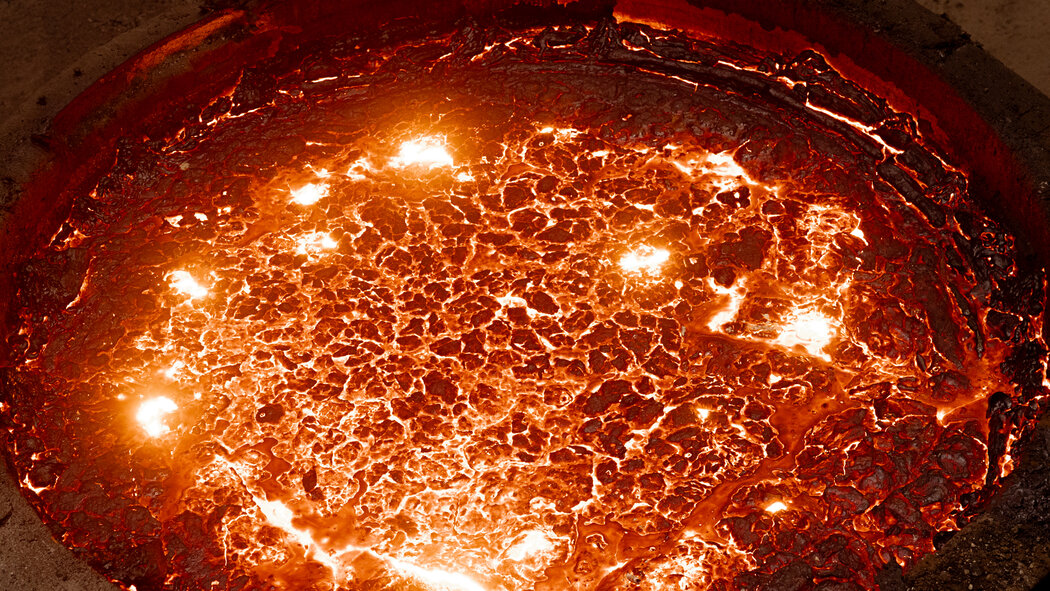At Tata Steel’s IJmuiden facility near Amsterdam, molten steel flows like lava into long, narrow molds, solidifying into uniform slabs measuring 40 by 4 feet.
These products, however, are highly specialized. Each piece is custom-designed—from battery casings that prevent leakage to car parts engineered to absorb crash impact, and cans that preserve food safely for extended periods.
Only a select few companies globally have the capability to produce such sophisticated, high-grade steel. Despite this, Tata faces the same challenges confronting steelmakers worldwide: a surplus of steel production that far exceeds global demand.
Projections from the Organization for Economic Cooperation and Development estimate that steel overproduction could reach 721 million tons by 2027.
One potential solution would be to reduce steel output. However, no nation is willing to curtail production of this material, which remains vital to their economic stability and national security.
Steel has long symbolized industrial strength and prestige. It underpins modern infrastructure—buildings, roads, vehicles, household appliances, and even cutlery—as well as military hardware such as tanks, fighter jets, and weaponry.
In Europe, diminishing reliance on the United States for security has further highlighted steel’s strategic importance.
The British government underscored this in April when it passed emergency legislation to assume control over the nation’s last two active blast furnaces, with the business and trade secretary emphasizing steel’s central role in the country’s industrial might and global standing.
Experts note that while no country can produce every essential good domestically, steel remains among the critical materials that nations want guaranteed access to at all times.
Over the past decade, China’s surge of inexpensive steel has reshaped the global market. Its vast network of mills, often state-supported and less regulated environmentally than European counterparts, produces more steel and aluminum than the rest of the world combined. As China’s economic growth slows, it is exporting increasing volumes at aggressively low prices.
This influx has driven prices down, squeezed profits, and led to layoffs. Steel is now priced below bottled water on a per-kilogram basis. Reduced revenues hinder investment in low-carbon technologies necessary for meeting the European Union’s climate objectives, according to recent OECD warnings.
Governments face a difficult balancing act: safeguarding jobs and strategic industries, minimizing subsidies, fostering cleaner energy transitions, and maintaining competitive steel production.
This situation exemplifies a complex legacy of globalization, where market distortions now intersect directly with national security concerns.
Earlier this year, Tata Steel cut 1,600 jobs at its IJmuiden plant. In 2024, steel producers across the European Union announced 18,000 layoffs and shuttered nine million tons of production capacity.
Germany, the EU’s largest steel producer, recorded an 11.6 percent decline in steel output—over 17 million tons—in the first half of 2025 compared to the previous year.
The EU enforces trade measures to prevent Chinese steel dumping, yet imports continue, prompting non-traditional exporters like South Korea and Japan to seek alternative markets.
This dynamic has been described as a domino effect, intensifying global competition.
European steelmakers must also navigate punitive American tariffs. Last month, the U.S. increased tariffs on nearly all steel and aluminum imports to 50 percent—doubling the March rate—in an effort to bolster domestic producers.
These tariffs restrict European exports to the U.S. and redirect global steel exports toward Europe, heightening domestic competition.
The UK benefits somewhat, having been exempted from the additional 25 percent tariff and with agreements to phase out remaining tariffs.
Nonetheless, Britain’s aging steel infrastructure struggles to remain viable.
This spring, the UK government took control of the British Steel plant in Scunthorpe after its Chinese owner threatened closure due to daily losses nearing £700,000. The plant’s blast furnaces are the country’s last facilities producing steel from iron ore and coal rather than recycled scrap.
The UK also supported Tata Steel’s Port Talbot mill last year with a £500 million grant to facilitate its shift toward greener electric arc furnace technology that recycles steel.
In the Netherlands, Tata Steel’s IJmuiden site remains comparatively strong. Spanning an area equivalent to 1,100 soccer fields and adjacent to a public beach, it is one of the country’s largest industrial employers and the second largest steel plant in Europe.
The landscape is dominated by towering smokestacks and enormous piles of iron ore and coal. Tata Steel aims to transition the coal-dependent plant to renewable hydrogen by 2030 and is negotiating subsidies with the Dutch government.
The company also invests in workforce development, admitting between 150 and 200 trainees annually to its academy.
However, challenges persist. Dutch regulators have taken legal action against Tata Steel over fines and the potential shutdown of a coke oven due to toxic emissions. Transitioning to lower-emission technology will be costly and time-consuming.
Currently, steel produced with green hydrogen and electric arc furnaces emits significantly less pollution but is 30 to 60 percent more expensive than traditional methods.
Regarding tariffs, Tata Steel reported that 12 percent of its sales are linked to the U.S. market and that it passed most of the 25 percent tariff imposed in March onto American customers, including major firms such as Ford Motor, Chrysler, Caterpillar, and Duracell.
The company expressed concern that the newly increased 50 percent tariffs could render its steel prohibitively expensive for U.S. buyers.


0 Comments
No comments yet. Be the first to comment!